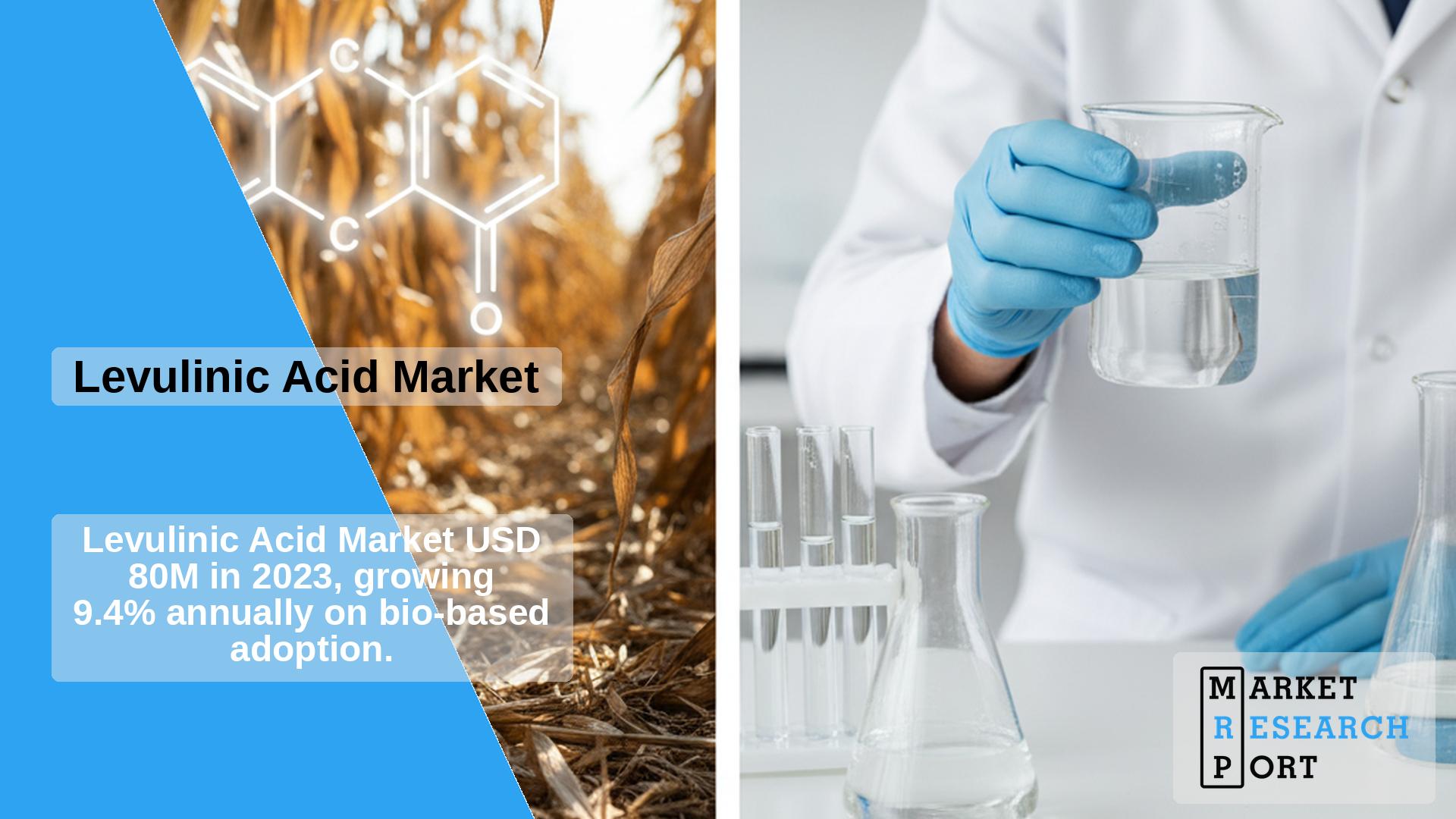
The global levulinic acid market was valued at USD 80.0 million in 2023 and is expected to grow at a CAGR of 9.4% between 2024 and 2030. This growth is primarily fueled by the increasing preference for levulinic acid derivatives over synthetic alternatives due to their enhanced properties.
Rising consumer uptake of products containing levulinic acid, especially in Asia Pacific and Europe, is anticipated to drive expansion. The emergence of cost-efficient levulinic acid production technologies also supports growth in these regions.
Driven by advancements in renewable chemistry and biotechnology, levulinic acid serves as a versatile platform chemical. It functions as a precursor for various specialty chemicals, including fuel additives like MTHF and pesticides such as DALA and DPA. Its relatively simple production process also heightens market attraction.
Levulinic acid is widely applied across numerous industries including cosmetics, pesticides, pharmaceuticals, and as a food additive. It finds use, although more limited, in manufacturing plastics, synthetic rubbers, and nylons. In cosmetics, levulinic acid is present in nearly 98 formulations, with sodium levulinate in about 295 products. Maximum concentrations reported reach about 4.5% in hair dyes and 0.62% for sodium levulinate.
Government policies encouraging bio-based chemical production align with sustainability and economic development strategies, exemplified by Europe’s bioeconomy initiatives emphasizing public investment, job creation, and circular economy principles.
The acid hydrolysis method accounted for 67.1% of revenue in 2023, favored for its efficiency in decomposing cellulose into levulinic acid. This approach utilizes acid catalysts to break down plant-based carbohydrates, securing high yields vital for meeting demands in agriculture, pharma, and food industries.
The bio-fine process, using biomass feedstock, is forecasted to grow at 8.1% CAGR through 2030. This eco-friendly and sustainable technology is gaining acceptance as industries seek greener chemistry solutions.
The food additive segment led the market in 2023 due to levulinic acid’s role in enhancing flavors and preserving food products. Driven by the expanding processed food sector and consumer demand for food safety and quality, this segment controls a significant share of market revenue.
Plasticizers application is projected for the fastest growth (2024-2030), linked to demand for flexible PVC used in flooring, wall coverings, and cables. The shift to bio-based plasticizers for environmental benefits further supports this trend.
North America is projected to expand at 7.1% CAGR, driven by growing consumer demand for sustainable products, technological advancements, R&D investments, and strategic industry collaborations focused on sustainable packaging.
The U.S. leads North America’s market, benefiting from advanced industrial infrastructure and environmental initiatives like the BioPreferred program fostering bio-product growth.
Canada is expected to record the fastest growth, propelled by rising biofuel demand to curb emissions and expanding applications in agrochemicals, food, and cosmetics sectors.
Europe dominated with a 52.1% market share in 2023, driven by strong government backing, high domestic capacity, accessible feedstocks, and early adoption of bio-based chemicals. Italy and Germany are key contributors due to industrial collaborations, growing personal care markets, and investments in bio-based plasticizer development.
Asia Pacific is forecasted to grow at 9.8% CAGR, supported by sustainable development priorities and industrial expansion in India, Japan, and South Korea. China holds a major share due to rising production capacity, sustainability policies, and bio-based chemical uptake. India’s growing agricultural and cosmetics sectors, fueled by international partnerships, are also lifting levulinic acid demand.
Leading firms include DuPont, Biofine Technology LLC, Segetis, Jiangsu Yancheng China Flavor Chemicals, and Hebei Langfang Triple Well Chemicals. Companies employ strategies including mergers, partnerships, and product innovation to consolidate market presence.
| Report Attribute | Details |
| Market size (2024) | USD 84.6 million |
| Forecast revenue (2030) | USD 144.7 million |
| Growth rate (CAGR) | 9.4% (2024-2030) |
| Base year | 2023 |
| Historical data | 2018-2022 |
| Forecast period | 2024-2030 |
| Quantitative units | Volume in kilotons; revenue in USD thousand |
| Scope | Revenue forecast, company rankings, competitive landscape, growth factors, trends |
| Segments | Process, application, region |
| Regions | North America, Europe, Asia Pacific, Latin America, Middle East & Africa |
| Countries | U.S., Canada, Mexico, Germany, UK, France, Italy, Spain, China, Japan, India, Brazil, Argentina, Saudi Arabia, UAE |
| Key companies | Segetis, Biofine Technology LLC, DuPont, Hebei Langfang Triple Well Chemicals, Jiangsu Yancheng China Flavor Chemicals, Shijiazhuang Pharmaceutical Group, Shanghai Apple Flavor & Fragrance |